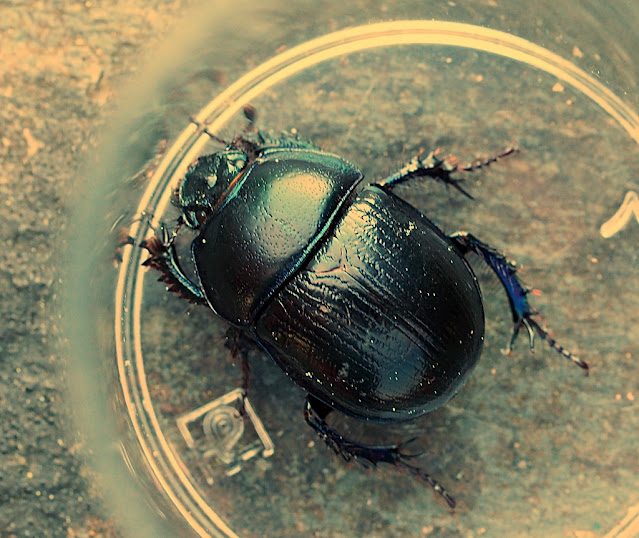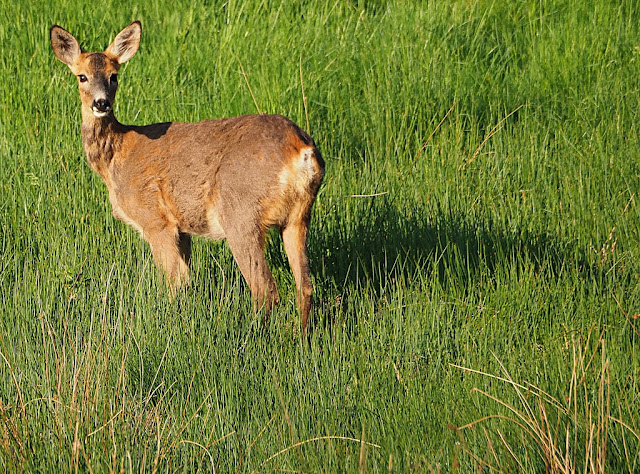We are living in a strikingly different landscape from the last fourteen or so years. From few trees to many. We did live amongst some trees in our part of Harray, in our garden there was a huge Sycamore, but most of the landscape was treeless.
 |
| Alder Alnus glutinosa |
 |
| Douglas Fir Pseudotsuga menziesii I think. |
 |
| (English) Elm, Ulmus (procera), Pretty sure this isn't Wych Elm but Elm ID is a tricky business. |
These three trees are all pretty old, I'd guess that the Elm and the Alder are 300 years+. I must research the planting of Douglas Fir, a tree native to North America.
I used AI to identify the fir, and the app found that challenging to start with. I think it probably got it right but I need to check by taking some photos of the cones, which are distinctive I believe, and the foliage. I've been using ObsIdentify quite a bit, mostly with plants and moths. There have been so many moths that are unfamiliar that the AI tool is ideal for getting a possible ID and then checking with the books. It's much quicker to work this way and I've had so many unfamiliar species that identification has been a real challenge. I have no issue with using this tool, it saves a lot of time and I use the identifications as a guide, I know some folk think this is cheating, but I really don't see the point in spending a lot more time getting to the same result.
I've run a light trap four times. I have to be sharpish getting out of bed to turn it off as there are breeding Robins in the garden. Two nights have had a lot of moths and two have been not so productive. This is probably temperature related. Quite a few species I don't think I've seen before, and quite a few I've not seen for a while or have seen very infrequently over the last few years.
New (in no particular order): Scorched Wing, Least Black Arches, Grey Birch, Pale-shouldered Brocade, Clouded Silver, Great Prominent, Broom-tip, Scalloped Hazel (maybe I've recorded that before), Water Carpet, Peacock Moth, Pale Prominent and a possible Toadflax Pug. Another pug that might be Golden-rod.
 |
| Broom-tip |
 |
| Clouded Silver |
 |
| Great Prominent |
 |
| Least Black Arches, which looks more like a micro-moth. |
 |
| Pale-shouldered Brocade |
 |
| Scorched Wing |
 | ||
| Grey Birch |
 |
| Pale Prominent |
The Grey Birch is a good record I think. Unfortunately I messed up with the best species, a very likely Toadflax Pug. Fortunately I managed a photo or two through the tube, but when I attempted a "proper" photo, it took flight. I should have taken the specimen.
 |
I should have learned by now with things like this; take the specimen. But... for various (unscientific) reasons I sometimes don't want to. Some discussion online about this ID but look here: https://britishlepidoptera.weebly.com/151-eupithecia-pulchellata-foxglove-pug.html
 |
| Other moths have included this showy threesome, left to right - Lesser Swallow Prominent, Herald, Buff-tip. |
I've a couple of other interesting things from the pheromone traps, a putative Grapholite funebrana and another Tortrix to FUN which is one of the tricky Epiblema stricticana group (or similar). I'm told the G. funebrana will need dissecting to prove the ID, although I'm pretty comfortable with it. The Epiblema certainly needs dissecting. At least I've found the box with my microscope in it.
Many, many other new insects, I need to order a bee/wasp ID book. Here are a couple I've found.
 | |
| Some sort of Nomad Bee, Marsham's Nomad, I think, Nomada marshamella. |
And Orange tipped Mining Bee.
 |
| Orange-tipped Mining Bee, Andrena haemorrhoa. |
Lots of new beetles, Necrodes littoralis and quite a few Melolontha, the difficulty is deciding which Melolontha. Both the Common Cockchafer Melolontha melolontha and the rare Melolontha hippocastani Northern Cockchafer are possible here, and perhaps about equally uncommon, theoretically. But which have I got?
Males have seven "blades" to their antennae, whilst females have six. So the above images are of a male. Many thanks to MW and CU for confirming this identification.
There have been some other excellent beetles, and there are a few awaiting identification.
Many of these about, some even living in burrows in the back garden.
 | |
| Geotrupes stercorarius. |
And this species has been commonly found in the in and around the light traps and once in a pheromone trap. Interestingly there are very few records for this VC (vice-county).
 |
| Necrodes littoralis. |
Two more large beetles arrived on the outside of the kitchen window. Unfortunately the visit of Oiceoptoma thoracicum was brief, no pictures. But, Rhagium bifasciatum was a show off and posed very nicely.
 |
| Rhagium bifasciatum |
There are quite a number of smaller beetles that I have to get the microscope into action for.
Lastly, and I've left out diptera, which have also been interesting, and caddis, and slugs, oh, nearly forgot this really excellent spider record.
 |
| Pseudeuophrys lanigera |
There are very few Scottish records of this tiny spider first recorded in the UK in 1930.
Mammals have included plenty of Pipistrelle 45s whizzing around the garden and locale at dusk and a few Roe Deer sightings. There are Rabbits....
 |
| Roe doe. |
I've recorded 55 species of bird on the new patch since we arrived here, and today, despite trying for Redstart which I suspected on a brief snatch of song the other day, is the first day I haven't added a species. Stand out species have been Osprey, Kingfisher, Tree Sparrow and Garden Warbler. Swift and House Martin seem to be breeding locally which is excellent. So far unrecorded have been Sparrowhawk, Treecreeper, Woodcock, Whitethroat, Redstart, Wood Warbler and Spotted Flycatcher. There are, of course, other possibilities! And I haven't recorded Feral Pigeon as I can't remember if I saw them within the patch or just nearby.
 |
| Yellowhammer, male. |
So all in all a pretty good start, now I'd better get some more boxes unpacked.

















